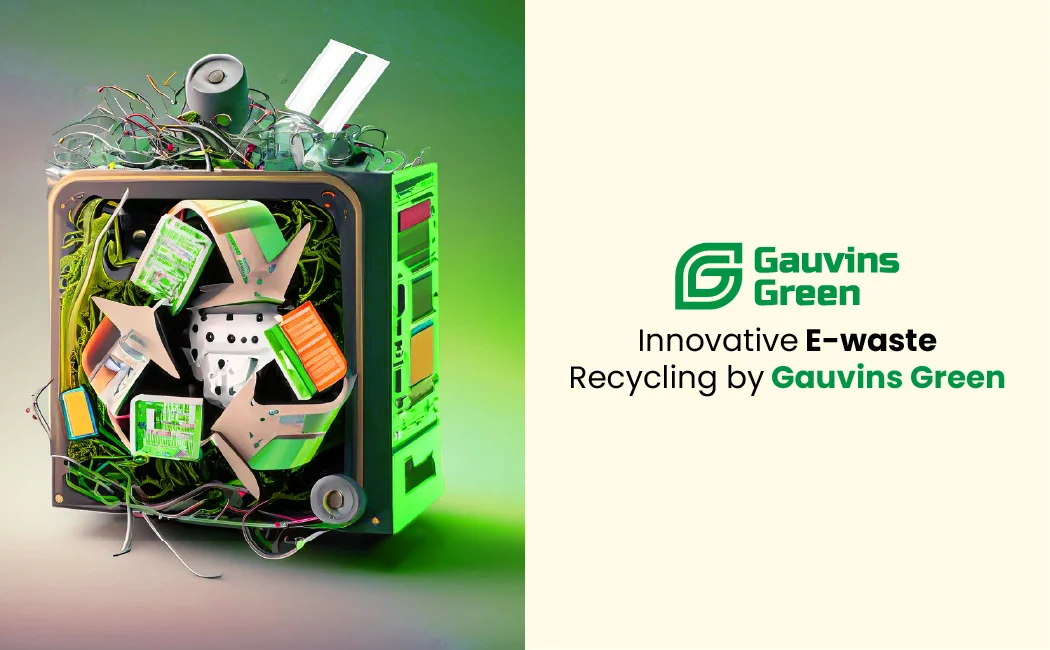Pioneering a Sustainable Future in E-Waste Management
In the quest to tackle the mounting challenge of electronic waste, the world is witnessing groundbreaking innovations in e-waste recycling. At Gauvins Green, we are committed to staying at the forefront of these advancements, continuously integrating cutting-edge technologies and methods to revolutionize the way e-waste is processed and repurposed.
The Next Frontier in E-Waste Recycling
Technological advancements have opened up new possibilities in the realm of e-waste recycling, transforming it from a mere environmental obligation to a domain of exciting innovation.
AI-Driven Sorting and Processing
One of the most significant breakthroughs in e-waste recycling is the integration of Artificial Intelligence (AI). AI-driven systems can quickly and accurately sort e-waste materials, distinguishing between different types of metals, plastics, and other materials, which enhances the efficiency and effectiveness of the recycling process.
Advanced Material Recovery Techniques
Innovative material recovery methods are enabling recyclers to extract precious metals like gold, silver, and palladium more efficiently than ever before. These methods not only increase the financial viability of e-waste recycling but also significantly reduce the environmental footprint associated with mining these resources.
The Role of Robotics in E-Waste Recycling
Robotics technology has made significant inroads into the recycling industry, and e-waste management is no exception. Automated robots can dismantle electronic devices, reducing the risk of exposure to hazardous materials and ensuring a more precise and less labor-intensive process.
Blockchain for Traceability and Transparency
Blockchain technology is being explored for its potential to enhance traceability and transparency in e-waste recycling. This technology can track the journey of electronic products from their creation to their final disposal, ensuring responsible recycling practices.
Read more : Innovating for the Earth: How Technology is Transforming E-Waste Management
The Path to a Circular Economy
The ultimate goal of these innovations is to transition towards a circular economy, where e-waste is viewed not as trash, but as a valuable resource. By closing the loop, we can minimize waste, conserve natural resources, and create a more sustainable future.
Conclusion
As we break new ground with these cutting-edge innovations in e-waste recycling, Gauvins Green is dedicated to adopting these transformative techniques. Our commitment is not just to manage e-waste but to redefine its potential, paving the way for a greener, more sustainable world.
In embracing these innovations, we are not only addressing the e-waste challenge but also unlocking new opportunities for environmental preservation and economic growth.
FAQ’s
1. What role does AI play in modern e-waste recycling?
Artificial Intelligence (AI) is revolutionizing e-waste recycling by enabling more precise and efficient sorting of materials. AI-driven systems can accurately differentiate between various types of metals, plastics, and other materials, streamlining the recycling process and improving recovery rates.
2. How are advanced material recovery techniques beneficial in e-waste recycling?
Advanced material recovery techniques allow for the efficient extraction of precious metals like gold, silver, and palladium from e-waste. These techniques not only make e-waste recycling more financially viable but also reduce the environmental impact associated with mining new resources.
3. What is the significance of robotics in e-waste recycling?
Robotics technology in e-waste recycling enhances the efficiency and safety of the process. Automated robots can dismantle electronic devices more precisely and without the risk of human exposure to hazardous materials, making the process less labor-intensive and more environmentally friendly.
4. How does blockchain technology contribute to e-waste recycling?
Blockchain technology contributes to e-waste recycling by enhancing traceability and transparency. It can track the lifecycle of electronic products from manufacture to disposal, ensuring responsible recycling practices and providing assurance of ethical and environmental compliance throughout the recycling chain.




